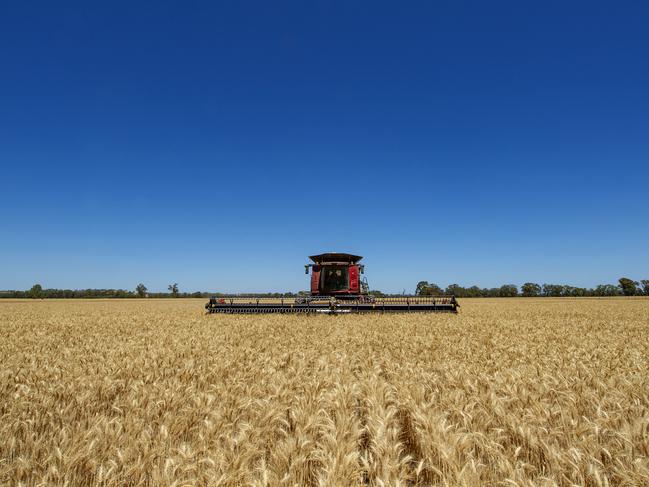ABARES: Australian agriculture production to hit record $66 billion
Farmers will have more cash in their pockets this year, according to ABARES predictions, but exports won’t share in the same good fortune.

AUSTRALIAN agriculture is headed for a record-breaking $65.9 billion value this financial year, thanks to a bumper winter crop and drought-busting rains.
And farmers can expect an 18 per cent rise in broadacre farm incomes to an average $184,000, the Federal Government’s agricultural research agency has predicted.
But the news is not so good for agricultural exporters, with the value of exports tipped to drop another 4 per cent in 2020-21, making it three years in a row of falling earnings.
The mixed bag of results – forecast in the Australian Bureau of Agricultural and Resource Economics and Sciences commodity outlook, released today – has come amid ongoing uncertainty for many sectors, as the COVID-19 economic recovery continues and trade tensions persist.
ABARES acting executive director Jared Greenville said the rebound from drought had been “exceptional”, with farmers producing their second-largest winter crop ever at 55.2 million tonnes.
“That’s what’s really driving the sector, it’s fantastic news,” Dr Greenville said.
“Livestock prices have also stayed high because of African Swine Fever (in China) and the impact that has had on global markets.”
Agricultural production value is predicted to rise 8 per cent, just shy of $66 billion – up from the $61 billion recorded last year – before dropping back to $63.3 billion in 2021-22.
The medium-term forecast would see production value likely to rise no higher than $66 billion by 2026 – a way off the sector’s ambition of reaching $100 billion by 2030.
Dr Greenville said livestock prices would come down as China got ASF under control and rebuilt its pig herd, while chances were high that poorer weather conditions would follow 2020s cracker season.
“Some of the fundamentals suggest a flatter path but that’s not to say we can’t do things to grow the sector better than expected in the forecast,” he said.
“The sector can’t rest on its laurels … we can’t just rely on seasonal conditions.”
He said more investment in innovation, reducing costs for exporters, and rewarding farmers for sustainability would be among the key moves to improve value.
Lower energy prices due to COVID-19 lockdowns have led to lower costs for chemicals, fertilisers and fuels, while lower fodder and seed prices have all helped keep more cash in farmers’ pockets, contributing to the 18 per cent jump in broadacre farm incomes.
Ag exports, however, will drop to $46 billion, as the global economy recovers, as well as lower livestock numbers due to herd restocking.
Prices are forecast to fall for most commodities, except natural fibres.
Wine grapes will be among the hardest hit, forecast to fall from $694 a tonne to $540 a tonne due to the loss of China as a major customer for Aussie wine.
Meanwhile, worker shortages are likely to see the volume of horticulture production fall by 17 per cent, but higher prices could see the sector’s value grow by 6 per cent to reach $13 billion this year.


